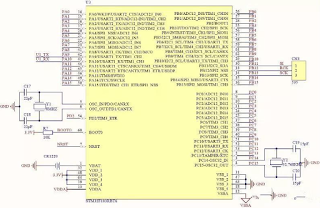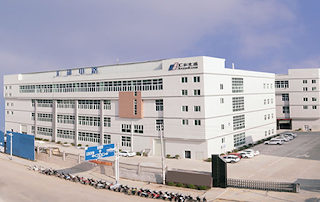Printed Circuit Board (PCB) Materials
Printed circuit boards (PCBs) are usually a flat laminated composite made from non-conductive substrate materials with layers of copper circuitry buried internally or on the external surfaces.
They can be as simple as one or two layers of copper, or in high density applications they can have fifty layers or more. The flat composite surface is ideal for supporting the components that are soldered and attached to the PCB, while the copper conductors connect the components to one another electronically.
The six basic components of a standard printed circuit board are:
Prepreg
Laminate
Copper foil
Soldermask
Nomenclature
Final finish
Prepreg is a thin glass fabric that is coated with resin and dried, in special machines called prepreg treaters. The glass is the mechanical substrate that holds the resin in place. The resin – usually FR4 epoxy, polyimide, Teflon, and others – starts as a liquid that is coated onto the fabric. As the prepreg moves through the treater, it enters an oven section, and begins to dry. Once it exits the treater, it is dry to the touch.
When prepreg is exposed to higher temperatures, usually above 300º Fahrenheit, the resin begins to soften and melt. Once the resin in the prepreg melts, it reaches a point (called thermosetting) where it then re-hardens to become rigid again and very, very strong. Despite that strength, prepreg and laminate, tends to be very light. Prepreg sheets, or fiberglass, are used to manufacture many things – from boats, to golf clubs, aircraft, and wind turbine blades. But it is also critical in PCB manufacturing. Prepreg sheets are what we use to glue the PCB together, and they are also what is used to build the second component of a PCB – laminate.
Laminates, sometimes called copper clad laminates, are composed of sheets of prepreg, that are laminated together with heat and pressure, with sheets of copper foil on either side. Once the resin hardens, PCB laminates are like a plastic composite, with sheets of copper foil on both sides.
We image and etch away the copper foil, to produce the circuitry on the laminate surfaces. These copper circuits will become the conductors, or electrical wiring, on the internal and external layers of the board. When the laminate layers are imaged and etched with the circuits, they are then laminated together using the prepreg discussed earlier.
Soldermask is the green epoxy coating that covers the circuits on the outerlayers of the board. The internal circuits are buried in the layers of prepreg, so they do not need to be protected. But the external layers, if left unprotected, will oxidize and corrode over time. Soldermask provides that protection to the conductors on the outside of the PCB.
Nomenclature, or sometimes called silk screen, is the white letters that you see on top of the soldermask coating on a PCB. Nomenclature is the lettering that shows where each component goes on the board, and sometimes provides component orientation as well.
Both soldermask and nomenclature are available in other colors besides green and white, but those are the most popular.
Soldermask protects all the circuits on the outerlayers of the PCB, where we do not intend to attach components. But we also need to protect the exposed copper holes and pads where we plan to solder and mount the components. To protect those areas, and to provide a good solderable finish, we usually use metallic coatings, such as nickel, gold, tin/lead solder, silver and other final finishes designed just for PCB manufacturers.
PCBSKY, has been making high-quality electronic PCB’s for over 10 years. As a printed circuit board manufacturer over the years, we have specialized in a wide variety of circuit board types as we kept pace with rapidly changing market needs. We maintain an expert staff of more than 400 employees at our 55,000-square-foot facility in China. Over time, to serve the needs of modern electronics, we developed expertise in manufacturing flexible circuits and rigid flex PCBs.
Flexible and rigid flex PCBs provide the foundation for highly sophisticated electrical systems that can fit inside of small devices. They can also be designed and manufactured to be very thin and very light, without sacrificing survivability. These PCBs offer a high degree of reliability in environments with high shock and vibration. Industries that frequently use flexible and rigid flex PCBs include aerospace, medical, military, telecommunications, and others.
This page will discuss some of the materials most commonly used to construct printed circuit boards, the characteristics of those materials, and why you should choose Printed Circuits, LLC, as your printed circuit board manufacturer.
What are Printed Circuit Boards Made Of?
PCBs may use a variety of materials as substrates and components. Material selection depends on the requirements of the application, as different material choices will give the circuits varying qualities that facilitate performance in specific circumstances.
Designers sometimes choose materials based on electrical performance for high speed applications, or mechanical or thermal survivability – for example automotive under the hood applications. Designers may choose to comply with regulatory governmental requirements. For example, the European Union’s Restriction of Hazardous Substances (RoHS) directive forbids the use of materials containing any restricted chemicals and metals.
One of the most popular considerations is whether the materials will pass UL, short for Underwriters Laboratories flame suppression characteristics. A UL rating is critical for many electronic devices to show that in the event of a fire, the circuit board will self-extinguish – usually considered critical for consumer and other electronics.
Laminates are typically made from resins and cloth fabric that offer distinct insulative capabilities. These include dielectrics like FR4 epoxy, Teflon, polyimide, and other laminates that use a combination of glass with resin coatings. Many distinctive thermal and electrical factors determine which laminate will be the best fit for a given PCB design.
PCB designers face several performance features when they look at material selection for their design. Some of the most popular considerations are:
Dielectric constant – a key electrical performance indicator
Flame retardance – critical for UL qualification (see above)
Higher glass transition temperatures (Tg) – to withstand higher temperature assembly processing
Mitigated loss factors – important in high speed applications, where signal speed is valued
Mechanical strength including shear, tensile and other mechanical attributes that may be required of the PCB when placed into service
Thermal performance – important consideration in elevated service environments
Dimensional stability – or how much does the material move, and how consistently does it move, during manufacturing, thermal cycles or exposure to humidity
Here are a few of the most popular materials used in the fabrication of printed circuit boards:
FR4 epoxy laminate and prepreg: FR4 is the most popular PCB substrate material in the world. The denotation ‘FR4’ describes a class of materials that meet certain requirements defined by NEMA LI 1-1998 standards. FR4 materials have good thermal, electrical, and mechanical characteristics, as well as a favorable strength-to-weight ratio that makes them ideal for most electronic applications. FR4 laminates and prepreg are made from glass cloth, epoxy resin, and are usually the lowest cost PCB material available. It is especially popular for PCBs with lower layer counts – single, double sided into multilayered constructions generally less than 14 layers. Additionally, the base epoxy resin can be blended with additives that can significantly improve its thermal performance, electrical performance, and UL flame survival/rating – greatly improving its ability to be used in higher layer count builds, higher thermal stress applications, and greater electrical performance at a lower cost for high speed circuit designs. FR4 laminates and prepregs are very versatile, adaptable with widely accepted manufacturing techniques with predictable yields.
Polyimide laminates and prepreg: Polyimide laminates offer higher temperature performance than FR4 materials as well as a slight improvement in electrical performance properties. Polyimides materials cost more than FR4 but offer improved survivability in harsh and higher temperature environments. They also are more stable during thermal cycling, with less expansion characteristics, making them suitable for higher layer count constructions.
Teflon laminates and bonding plies: Teflon laminates and bonding materials offer excellent electrical properties, making them ideal for high speed circuitry applications. Teflon materials are more expensive than polyimide but provide designers with the high-speed capabilities that they need. Teflon materials can be coated onto glass fabric, but can also be manufactured as an unsupported film, or with special fillers and additives to improve mechanical properties. Manufacturing Teflon PCBs often requires a uniquely skilled workforce, specialized equipment and processing and an anticipation of lower manufacturing yields.
Flexible laminates: Flexible laminates are thin and provide the ability to fold the electronic design, without losing electrical continuity. They do not have glass fabric for support but are built on plastic film. They are equally effective folded into a device for a one-time flex to install application, as they are in dynamic flex, where the circuits will be folded continuously for the life of the device. Flexible laminates can be made from higher temperature materials like polyimide and LCP (liquid crystal polymer), or very low-cost materials such as polyester and PEN. Because the flexible laminates are so thin, manufacturing flexible circuits also can require a uniquely skilled workforce, specialized equipment and processing and an anticipation of lower manufacturing yields.
Others: There are many other laminates and bonding materials on the marketplace including BT, cyanate ester, ceramics, and blended systems that combine resins to get distinct electrical and/or mechanical performance characteristics. Because the volumes are so much lower than FR4, and the manufacturing can be much more difficult, they are usually considered expensive alternatives for PCB designs.


You are giving such interesting information. It is great and beneficial info for us, I really enjoyed reading it. Thankful to you for sharing an article like this. Electronic PCB Board Cloning
ReplyDeleteThis article provided me with a lot of useful information. The material you presented during this post provided me with some excellent information. Continue to post. Vlsi Course in Bangalore
ReplyDeleteI found decent information in your article.engineering consultant I am impressed with how nicely you described this subject, It is a gainful article for us. Thanks for share it.
ReplyDeleteVery good, This information is essential and informative which you have shared here. Read more info about Electrical Engineering Course Online India. It is beneficial for beginners to develop their knowledge. It is very gainful information. Thanks for share it.
ReplyDeleteThe information in the post you posted here is useful because it contains some of the best information available. Thanks for sharing it. Keep up the good work PCB Copy Service
ReplyDeleteI am thankful to you for sharing this article here about Bluetooth Audio Receiver Circuit Board. It's a nice article, Which you have shared here. Your article is very informative and I really liked the way you expressed your views in this post.
ReplyDeleteI’m genuinely impressed with your knowledge. You have shared good knowledge by this blog. It was a really attractive blog. Please keep sharing your post with us.Test And Tag Adelaide.
ReplyDeleteIt is a proficient article that you have shared here.testing and tagging adelaide I got some different kind of information from your article which I will be sharing with my friends who need this info. Thankful to you for sharing an article like this.
ReplyDeleteYour take on the subject is wonderful. I agree with your opinion. Hope to read more on this topic to increase my knowledge in this field. Thin Film Coatings From Valley Design.
ReplyDeleteThe article you shared about the printed circuit board material is very informative.Learned a lot from your content.The PCB Design Services are offering their best to provide quality outputs.
ReplyDelete